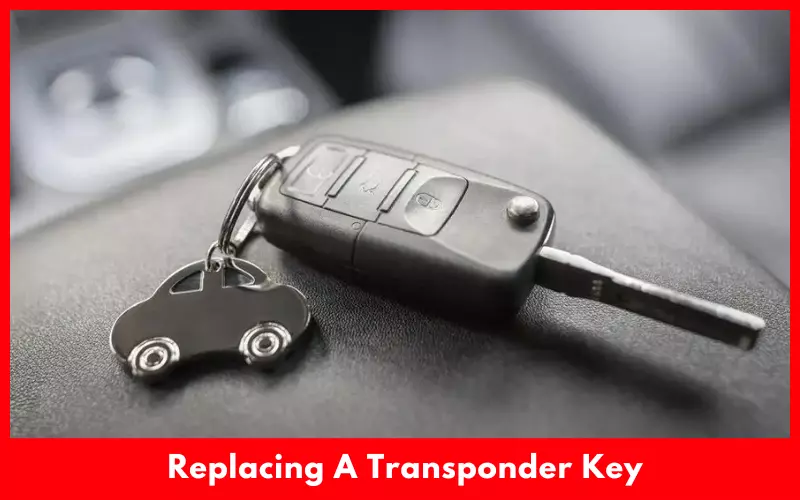You are here because you don’t know how to disable transponder key system without key. The transponder key ensures complete protection of the vehicle while allowing it to start the vehicle effortlessly. But what if you lose the key or it gets damaged?
Since replacing the transponder key is tiresome and costly, disabling it for a short time can be a convenient idea.
You can disable the transponder key system using various techniques including removing the wire loops, disconnecting the key antenna’s wire, and unplugging the immobilizer. Let’s get all the details.
Article Summary
How To Disable Transponder Key System without Using Original Key?
Instead of the key, you can use a key fob to disable the transponder key system. You can also unplug the immobilizer from the power source to do the same job. Below are two simpler processes to disable the transponder key system:
1. Disconnecting Transponder System
Tools Needed
You’ll require these basic tools to disable the transponder key:
- Screwdriver
- Electric tape
- Wire cutter
- Insulated gloves
Disconnect The Battery
Locate the car’s battery by pulling the hood and then disconnect its negative terminal using a wrench.

Detach The Transponder System
A transponder system is a plastic box that is usually placed around the ignition barrel in most cars. Once found, remove its housing or cover using a screwdriver. After unscrewing its fastenings, lift the housing gently.
Cut the Loop Wire
This wire looped around the ignition barrel. Once found, cut it using a wire cutter. Wrap tape on the wire’s end to avoid causing a short circuit.
Check The Vehicle
Re-attach the battery’s negative terminal and try to start the car. If it does, you have successfully disabled the transponder key system.

2. Disconnecting The Key Antenna’s Wire
Disabling the transponder key system through an electrical system can be challenging due to the complicated mechanism and deeply placed power lines of the key system. So you may need to disassemble plenty of components to deal with the system.
The steps to disable the transponder key system using an electrical system:
- Locate the transponder key antenna that is placed near the ignition lock cylinder.
- Remove the covers or panels to get the antenna and disconnect the key antenna’s wires.
- Check the wires using a multimeter to make sure these have disconnected properly.
- Wrap the ends of wires using tape to prevent toughing them from each other.
- Remove the antenna from the car using a soldering iron and pliers to disable the transponder key system.
- To verify, start the engine without the transponder key. If the vehicle runs, you’ve done it.
3. Replacing A Transponder Key
Purchasing a new is always a good idea to maintain the improved protection of the car. Though you can apply alternative methods to disable the transponder key system in an emergency, purchasing a new key may cost around $125 to $300.

While buying, make sure your transponder key is perfectly compatible with your car’s make and model. After buying the key, you have to program it to make it functional for your car.
How To Program Transponder Key System?
Programming the transponder key is a bit complicated process. However, you can give yourself a try before hiring an expert mechanic. The process is:

- Insert the key into the ignition and turn to the on position. The security light should turn on which indicates the car enters into programming mode. In some models, the dashboard’s light will start flashing to allow to program of the key.
- Push a button on the key fob to program it.
- In some models, you may need to turn the key to the on and off position a couple of times to program the key. To do so, wait for around 15 minutes or until the light turns off. Then pull out the key.
- Turn the key to the on position and repeat the process three times in total.
- To end the programming process, turn off the ignition and remove the key. Some vehicles also finish the program automatically after a certain time.
- Once done, use the key to start the vehicle. If you can, the key is programmed successfully.
- Some modern cars also allow to programming of the transponder key using a QR code. So instead of waiting for 45 minutes, you can quickly program the key using a smartphone.
FAQs
Can A Transponder Key Cause A Car Not To Start?
After receiving signals, the transponder chip responds with special codes to let the vehicle work. If the car’s ECU gets the correct codes, it starts the engine. But if the ECU gets the wrong ones, it won’t start the engine.
Can A Transponder Key Lose its Programming?
Though it’s rare, the transponder chip can lose its programming occasionally. Hence the key system error can stop working with the engine. Even if there is no damage to the key or chip, the transponder key won’t work.
What Causes A Transponder To Stop Working?
A transponder key is an electronic device that requires electronic power to function properly. The transponder key will fail if don’t get power from the battery. It can also malfunction due to losing its programming. The Transponder key may also stop working due to getting damaged physically.
Final Words
After learning how to disable the transponder key system without a key, hope you can get access to your vehicle in an emergency. However, we don’t recommend applying these techniques unless it’s an emergency or you can’t purchase a new one right away.
The reason is that applying this strategy can compromise the vehicle’s safety particularly if it is not by a novice.

